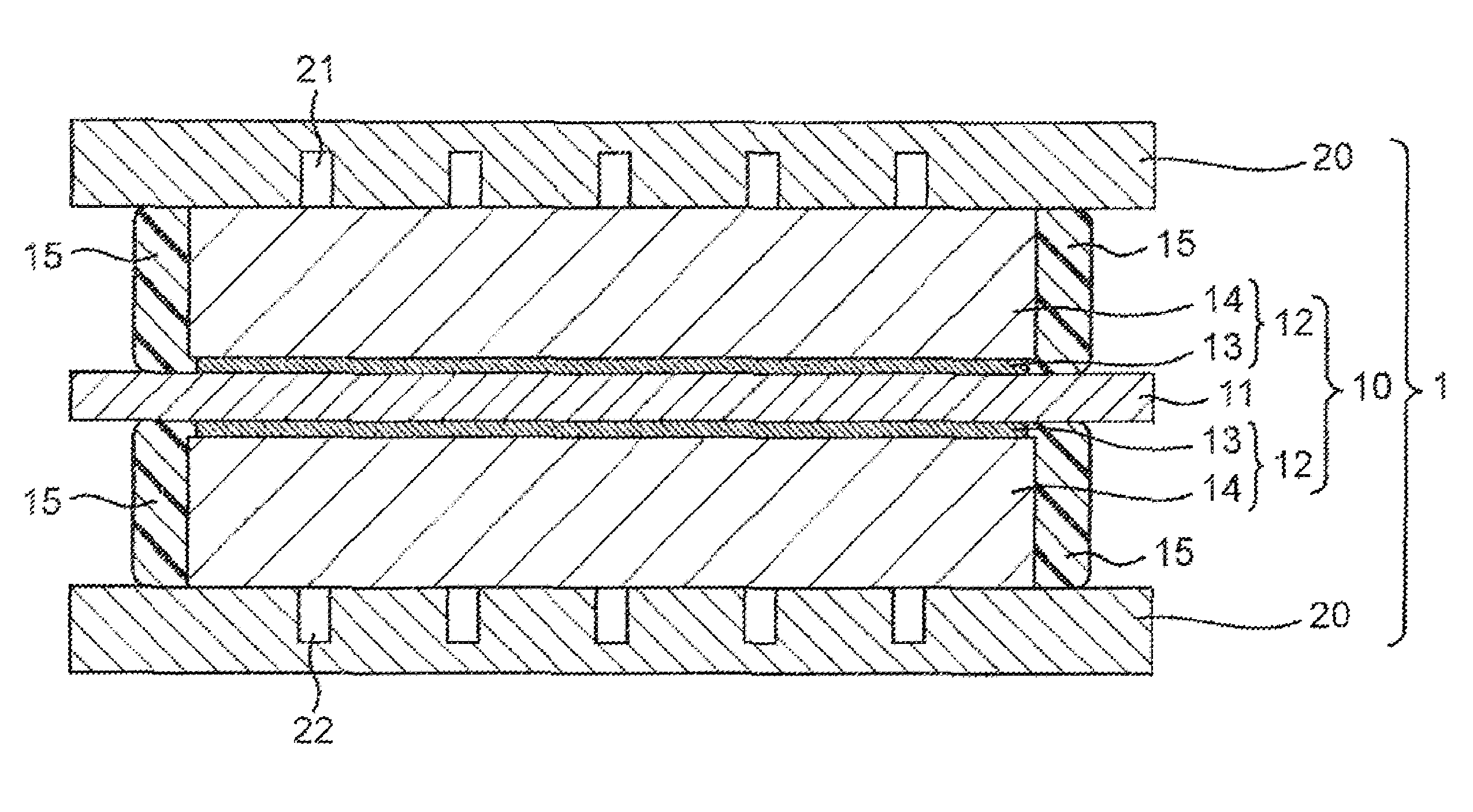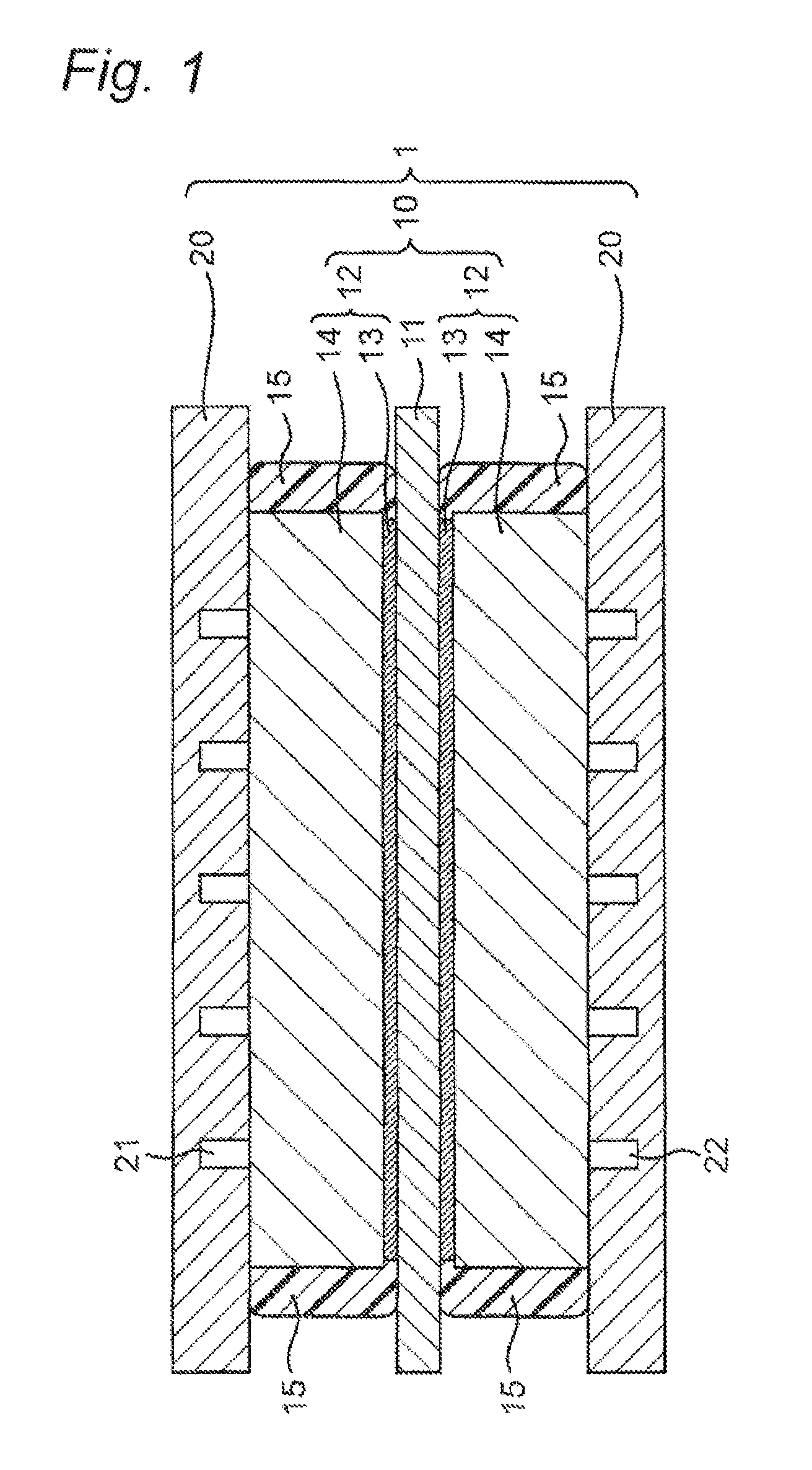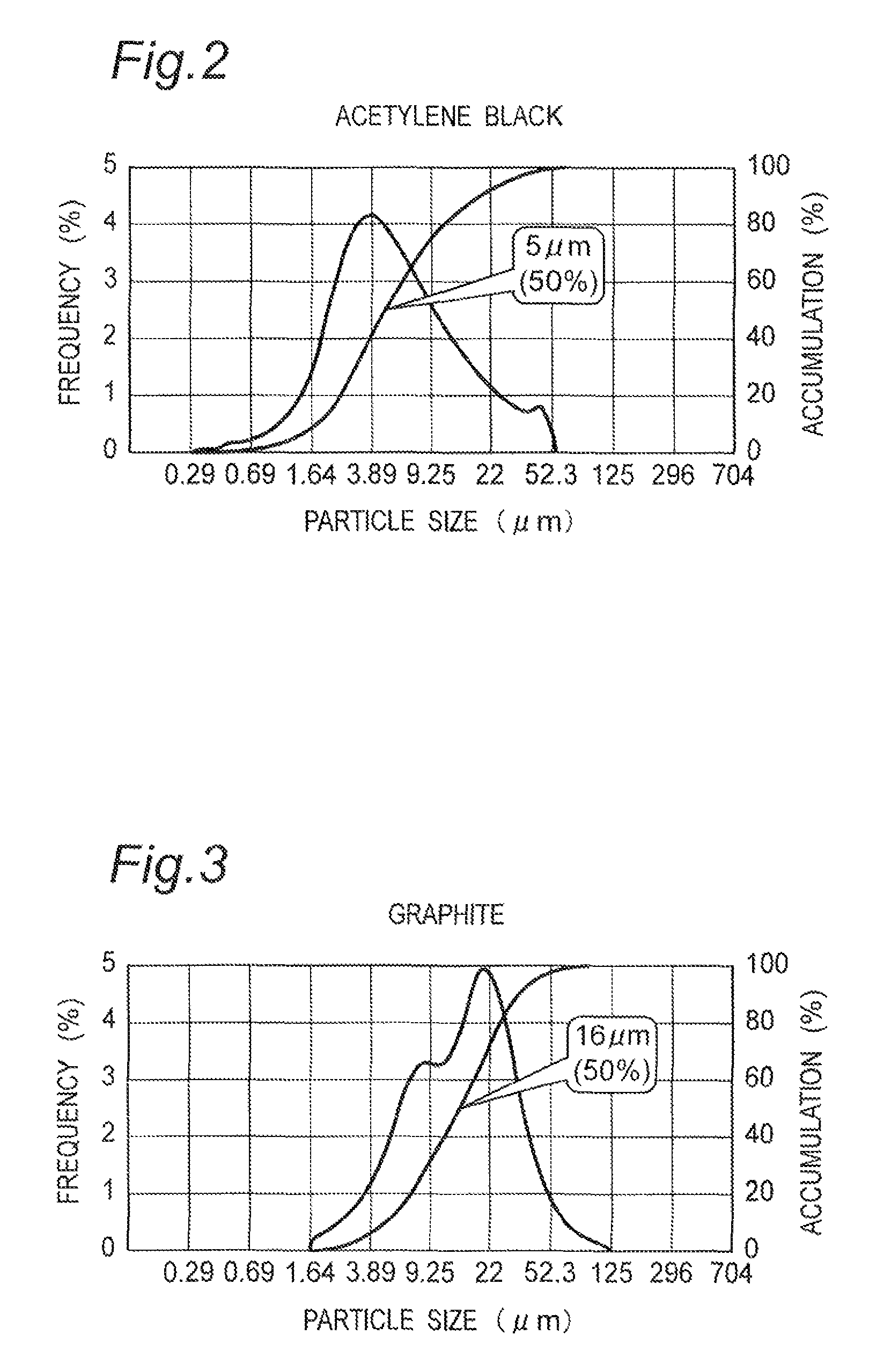Gas diffusion layer for fuel cell, manufacturing method therefor, membrane electrode assembly, and fuel cell
a technology of gas diffusion layer and fuel cell, which is applied in the field of fuel cell, can solve the problems of deterioration of the polymer electrolyte membrane, difficulty in reducing the cost of the electrode layer, and increase the cost of material and manufacturing process, so as to improve the power generation performance, reduce the cost of the electrode layer, and high voltage
- Summary
- Abstract
- Description
- Claims
- Application Information
AI Technical Summary
Benefits of technology
Problems solved by technology
Method used
Image
Examples
first embodiment
[0057]With reference to FIG. 1, a description will be given of the basic structure of a fuel cell according to a first embodiment of the present invention. FIG. 1 is a cross-sectional view showing the basic structure of the fuel cell according to the first embodiment. The fuel cell according to the first embodiment is a polymer electrolyte fuel cell that allows a fuel gas containing hydrogen and an oxidant gas containing oxygen such as air to electrochemically react with each other, to produce electric power and heat at the same time. It is noted that the present invention is not limited to such a polymer electrolyte fuel cell, but is applicable to various fuel cells.
[0058]As shown in FIG. 1, the fuel cell according to the first embodiment includes a cell 1 including a membrane electrode assembly 10 (hereinafter referred to as the MEA: Membrane-Electrode-Assembly) and paired plate-like conductive separators 20 and 20 disposed on opposite faces of the MEA 10. It is noted that the fue...
second embodiment
[0138]A description will be given of a fuel cell according to a second embodiment of the present invention. The fuel cell according to the second embodiment is different from the fuel cell according to the first embodiment in that carbon fibers of a weight not qualifying as a base member are added to the gas diffusion layer 19. The other aspects are the same as the first embodiment and, accordingly, the description common to them is not repeated, and the description will be given chiefly of the difference.
[0139]The gas diffusion layer according to the second embodiment is structured with a sheet-like and rubber-like porous member mainly comprised of conductive particles and polymer resin, with added carbon fibers of a weight not qualifying as a base member (e.g., of a weight smaller than the conductive particles and the polymer resin).
[0140]Example materials of the carbon fibers may include vapor grown carbon fibers (hereinafter referred to as VGCFs) milled fibers, cut fibers, chopp...
PUM
| Property | Measurement | Unit |
|---|---|---|
| weight percent | aaaaa | aaaaa |
| weight percent | aaaaa | aaaaa |
| weight percent | aaaaa | aaaaa |
Abstract
Description
Claims
Application Information
 Login to View More
Login to View More - R&D
- Intellectual Property
- Life Sciences
- Materials
- Tech Scout
- Unparalleled Data Quality
- Higher Quality Content
- 60% Fewer Hallucinations
Browse by: Latest US Patents, China's latest patents, Technical Efficacy Thesaurus, Application Domain, Technology Topic, Popular Technical Reports.
© 2025 PatSnap. All rights reserved.Legal|Privacy policy|Modern Slavery Act Transparency Statement|Sitemap|About US| Contact US: help@patsnap.com



